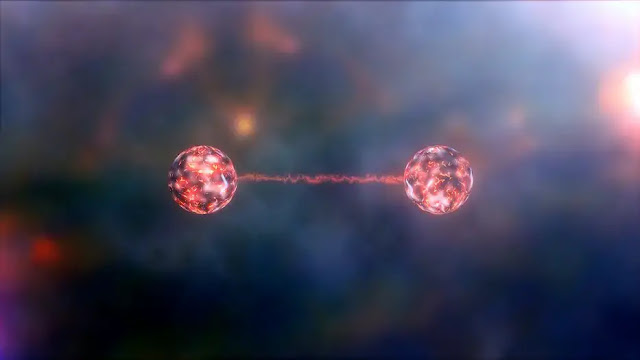In a paradigm-shifting revelation, scientists at Heriot-Watt University have conducted experiments suggesting that two conflicting versions of reality can simultaneously co-exist within the realm of quantum mechanics. The study challenges fundamental concepts of physics and raises questions about the existence of an objective reality.
The research delves into “Wigner’s friend,” a theoretical construct proposed by Nobel laureate Eugene Wigner in 1961. This concept revolves around a photon existing in a superposition, where its polarization is both vertical and horizontal until measured. This theoretical dilemma becomes the focal point of experimental exploration.
Physicists at Heriot-Watt University successfully translated Wigner’s thought experiment into reality using real photons and advanced measuring equipment. The results confirmed that the contradictory realities proposed by Wigner were indeed plausible, marking a significant leap from theory to experimental validation.
The implications of this study extend far beyond the confines of the lab, raising troubling questions for physicists about the nature of reality itself. Quantum mechanics, designed to describe the subatomic world where the rules of conventional physics break down, faces a paradox in which measurements may not be considered absolute truth.
The scientific method, which relies on universally accepted facts established through repeated measurements, faces a dilemma in the wake of this quantum revelation. Experimental results suggest that, unlike classical physics, measurements in the quantum realm may not represent absolute truth but are relative to the observer.
Dr. Martin Ringbauer, co-author of the study, emphasizes the need for a paradigm shift in how quantum mechanics is conceptualized. The stories told about quantum mechanics must adapt to the revelation that measurement results depend on the observer, challenging the traditional understanding of this enigmatic branch of physics.
The successful completion of Wigner’s friend’s experiment required both theoretical advances and experimental innovations. Physicists navigated the complexities of formulating a testable problem and developed precise control over quantum systems, bridging the gap between theory and practice.
The implications of the study suggest a reappraisal of the nature of reality within the quantum domain. As measurements become inherently observer-dependent, conventional rules governing classical physics may need to be adapted to accommodate the peculiarities of quantum mechanics.
The revelation that contradictory realities can exist simultaneously introduces a philosophical dimension to quantum mechanics. The search for absolute truth in the microscopic world challenges traditional notions of objectivity and questions the very structure of our understanding of the universe.
Beyond the theoretical implications, the study opens avenues for practical applications and technological innovations. Controlling quantum systems at this level could lead to advances in quantum computing and communications, opening up new possibilities in the technological landscape.
In the intricate dance between theory and experiment, the Heriot-Watt University study has revealed a puzzling reality where contradictory versions coexist within the quantum realm. This revelation not only challenges the foundations of physics, but also prompts a re-evaluation of our perception of reality itself, urging scientists to adapt the narratives surrounding the enigmatic world of quantum mechanics.



